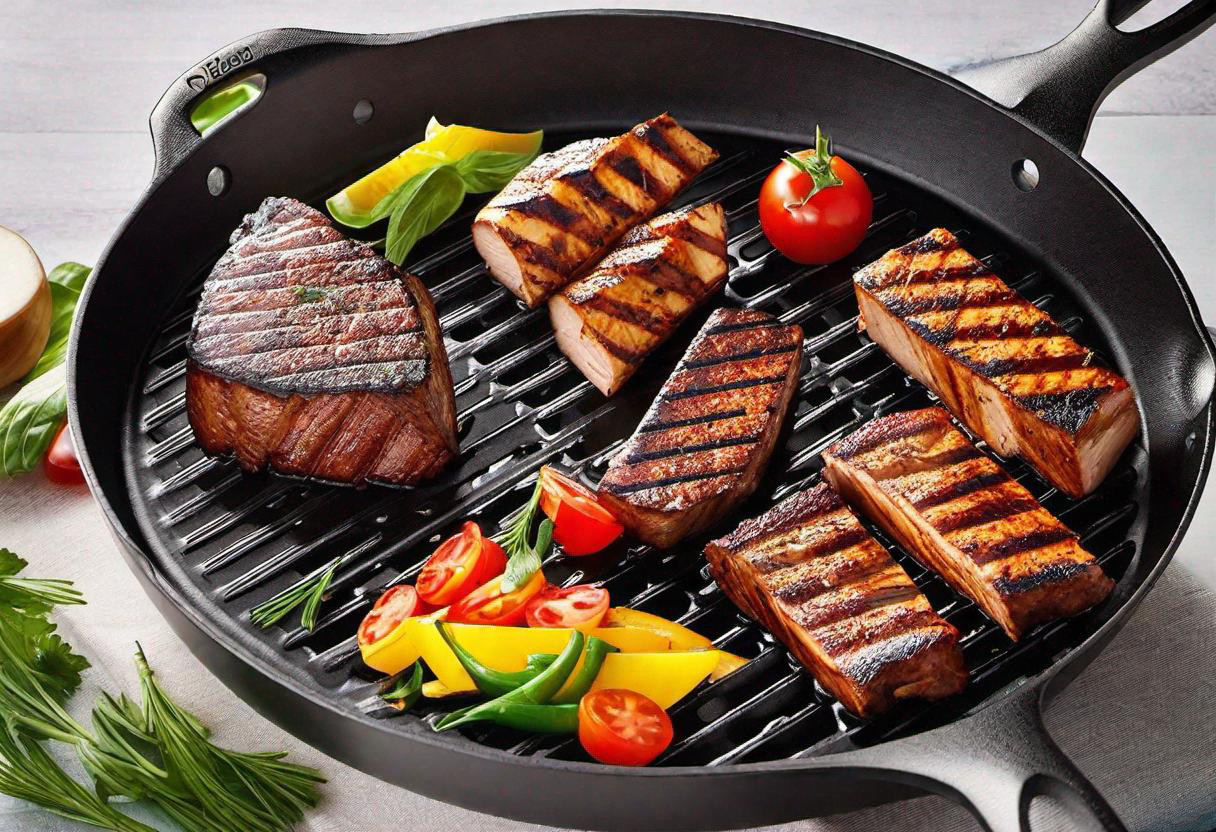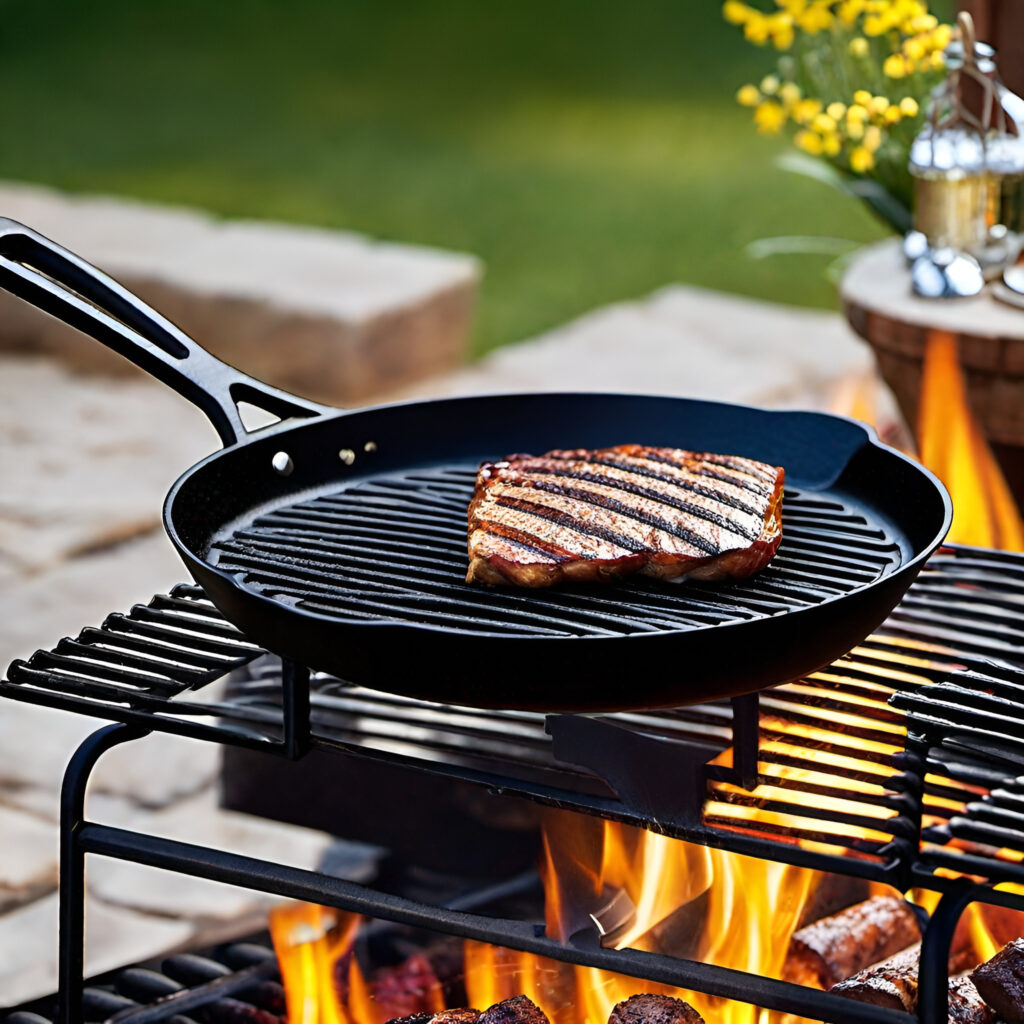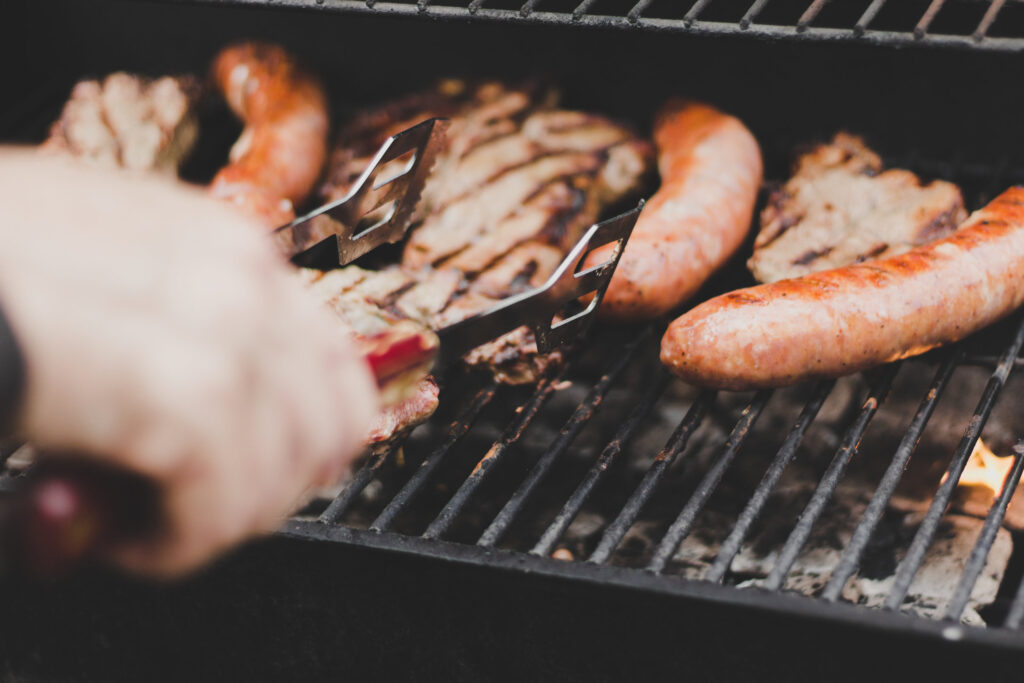Have you ever had a tough piece of steak that you wished was more tender and flavorful? In “Ways to Tenderize Meat,” you will discover a variety of methods to transform tough cuts of beef and other meats into succulent delicacies.
From physical techniques like pounding and massaging to using heat through slow cooking or pressure cooking, this article explores different avenues for achieving meat tenderness. Additionally, the role of collagen in meat tenderness and its breakdown or transformation is discussed.
Discover how factors such as breed, age, genetics, and sex affect meat tenderness and learn about sensory measures and scientific evaluations used to determine tenderness. Whether you’re a meat enthusiast or simply want to elevate your cooking skills, this article provides valuable insights on how to tenderize meat and unlock its full potential.
This image is the property of images.pexels.com.
Why Is Some Meat Tough?
When it comes to enjoying a delicious meal, the tenderness of meat plays a crucial role in our dining experience. However, not all cuts of meat are created equal, and you may have encountered some meats that are tougher than others. But what exactly causes meat to be tough? The answer lies in the composition of the meat, particularly the presence of collagen.
The Role of Collagen
Collagen is a protein that provides structure and support to various tissues in animals, including their muscles. In meat, collagen is found in connective tissues, which are responsible for holding the muscle fibers together.
While collagen is a crucial component for maintaining the structure of the meat, it can also contribute to toughness when not properly transformed.
When meat is cooked, collagen undergoes a transformation process known as collagen breakdown. This breakdown is essential for making the meat tender and easier to chew.
If collagen is not adequately broken down, the meat can end up tough and chewy.
Factors Affecting Meat Toughness
Several factors can influence the toughness of meat. One of the primary factors is the connective tissue content in the specific cut of meat. Cuts of meat that contain a higher proportion of connective tissues tend to be tougher.
Additionally, the animal’s breed, age, genetics, and sex can also impact meat tenderness. Younger animals typically have more tender meat compared to older animals. Furthermore, certain breeds of animals are known to have naturally tender meat, while others may have inherently tougher cuts.
The way the animal is raised and the quality of its diet can also influence the tenderness of the meat. Animals that have been raised in stressful or unfavorable conditions may have tougher meat compared to those raised in more ideal environments.
What kinds of meat are classified as tough?
While some cuts of meat are naturally tender, there are certain cuts that are classified as tough. Let’s take a look at some tough cuts of beef, pork, lamb, and chicken.
Tough Cuts of Beef
- Shanks: Beef shanks come from the leg portion of the animal and are known for their tough and fibrous texture.
- Brisket: Brisket is taken from the lower chest area of the animal and is often used for slow cooking methods, as it requires a longer cooking time to become tender.
- Short Ribs: Short ribs are cut from the rib section and can be quite tough, requiring slow cooking or braising to break down the collagen and achieve tenderness.
- Shoulder/Chuck: Beef shoulder or chuck cuts are rich in connective tissue and require longer cooking times to become tender.
- Flank Steak: Flank steak is a flavorful cut of beef, but it can be tough if not cooked properly. It is best when marinated or cooked quickly over high heat and sliced thinly against the grain.
Tough Cuts of Pork
- Pork Shoulder: Also known as pork butt, this cut is typically tougher due to the presence of collagen-rich connective tissues. Slow cooking or braising is often used to tenderize pork shoulder.
- Pork Belly: While known for its popularity in dishes such as bacon, pork belly can be tough if not cooked properly. Slow cooking or braising can help break down the collagen and render the fat for tenderness.
- Ham Hocks: Ham hocks come from the pig’s ankle area and are often used to flavor soups and stews. Due to the collagen-rich connective tissues, they require long, slow cooking to become tender.
Tough Cuts of Lamb
- Lamb Shank: Similar to beef shanks, lamb shanks come from the leg of the animal and require slow cooking methods to tenderize the tough meat.
- Breast: Lamb breast is a tough and fatty cut that is often used in stews or braised dishes to break down the collagen and render the fat for tenderness.
Tough Cuts of Chicken
- Chicken Leg Quarters: Chicken leg quarters consist of the drumstick and thigh portions, which can be tougher compared to other parts of the chicken. Proper cooking techniques such as slow cooking or grilling can help tenderize these cuts.
How Meat Tenderness Is Evaluated
Meat tenderness can be evaluated through sensory measures and scientific tests. Sensory evaluation involves assessing the tenderness, juiciness, and flavor of cooked meat by a panel of trained individuals. This subjective evaluation provides valuable insight into the overall eating experience of the meat.
On the other hand, the Warner-Bratzler shear test is a scientific method used to measure the force required to cut through a meat sample. This test utilizes a specialized device to determine the tenderness of the meat objectively. The higher the force required to cut through the sample, the tougher the meat is considered to be.
Cooking Tough Cuts of Beef and Other Meats
As mentioned earlier, various cuts of meat can be classified as tough. Let’s take a closer look at some of these cuts and explore their characteristics.
Cooking Shanks
Beef shanks are tough cuts that come from the leg portion of the animal. Due to the constant use of the leg muscles, shanks contain a significant amount of connective tissues and collagen. To tenderize shanks, slow cooking or braising methods are commonly employed to break down the collagen and achieve a melt-in-your-mouth texture.
Cooking Brisket
Brisket is a tough cut of beef taken from the lower chest area of the animal. It contains a high proportion of collagen and connective tissues, making it inherently tough. To transform brisket into tender, succulent meat, it requires a long cooking time using low-temperature methods such as smoking, slow roasting, or braising.
Cooking Short Ribs
Short ribs are taken from the rib section of the animal. They are known for their rich and beefy flavor but can be tough if not prepared correctly. Due to the presence of collagen, short ribs greatly benefit from slow cooking techniques like braising or cooking in a crockpot to achieve tender and flavorful results.
Cooking Shoulder/Chuck
The shoulder or chuck cuts of beef are known for their marbling and richness in flavor. However, they also contain a significant amount of collagen and connective tissues, making them relatively tough. These cuts are most often tenderized through slow cooking methods, such as braising or using a slow cooker, to break down the collagen and achieve tenderness.
Cooking Flank Steak
Flank steak is a long, flat cut taken from the abdominal area of the animal. It is known for its full flavor but can be tough if not cooked properly. To enhance tenderness, flank steak should be marinated before cooking and grilled quickly over high heat. To achieve maximum tenderness, it is essential to slice flank steak thinly against the grain after cooking.
This image is the property of images.pexels.com.
Ways to Tenderize Meat
Fortunately, there are several methods available to tenderize tough cuts of meat. These methods can be classified into physical, chemical, and biological methods.
Physical Methods
Physical methods of meat tenderization involve physically breaking down the muscle fibers and connective tissues to promote tenderness.
- Pounding: Using a meat tenderizer or mallet, you can pound the meat to break down the muscle fibers and connective tissues, effectively tenderizing it.
- Massaging: Applying pressure and kneading the meat with your hands can help break down tough muscle fibers and promote tenderness.
- Cutting: Making shallow cuts or scoring the surface of the meat can help break down muscle fibers and encourage tenderness during cooking.
- Agitating: Using mechanical devices such as Jaccard meat tenderizers or meat tenderizing machines can create small incisions in the meat, breaking down muscle fibers and collagen.
Chemical Methods
Chemical methods of meat tenderization involve the use of various substances to help break down collagen and promote tenderness.
- Salt: Sprinkling salt on the surface of the meat and allowing it to sit for a period of time can help draw out moisture and break down collagen, resulting in a more tender texture.
- Marinades with Acidic Ingredients: Marinades containing acidic ingredients such as vinegar, lemon juice, or buttermilk can help break down collagen and tenderize the meat. The acid in these marinades helps to denature proteins and promote tenderness.
- Enzyme Marinades: Enzyme-based marinades, such as those containing papaya, pineapple, or kiwi, can help break down collagen and tenderize the meat. These fruits contain natural enzymes, such as papain and bromelain, which assist in breaking down proteins.
Biological Methods
Biological methods of meat tenderization involve the use of natural processes to promote tenderization.
- Aging Meat: Dry aging or wet aging meat allows natural enzymes present in the meat to break down collagen and tenderize the meat over time. This process requires controlled temperature and humidity conditions.
- Velveting Meat: The tenderization technique often used in Chinese cuisine, velveting involves marinating meat in a mixture of cornstarch, egg whites, and sometimes vinegar to promote tenderness. The meat is then briefly blanched in boiling water or oil.
Conclusions
Understanding why some meats are tough and the factors influencing tenderness is essential for achieving enjoyable dining experiences. Collagen breakdown plays a crucial role in transforming tough cuts into tender, delicious meat.
Various physical, chemical, and biological methods can be used to tenderize tough cuts, allowing you to enjoy flavorful and succulent meat in your favorite dishes. So, the next time you encounter tough meat, remember there are plenty of techniques available to turn it into a tender delight. Happy cooking!
Happy Cooking!




